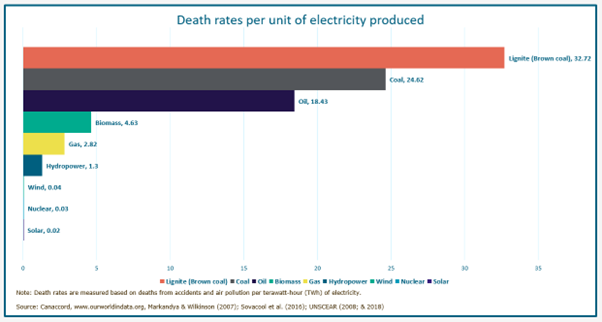Societal development and standard of living is directly related to energy consumption. Before the 17th century, useful energy came from animal or human labour, except for heat and light, which came from the burning of wood or other biomass. Fossil fuels arrived on the scene in the 1600s, when the UK began burning coal. This early adoption gave the UK a significant lead, culminating with it becoming the worlds’ economic powerhouse for the next three centuries.
The switch to crude oil began in the 19th century. When oil started to be refined into separate hydrocarbons, the list of its applications grew exponentially. In 1950 we consumed about 10 million barrels of oil per day – today this number is close to 100 million. In fact, if we put our current total energy consumption in terms of human labour, it is as if each person across Western civilisation has between 200 and 240 adults working for them 24 hours a day.
Mechanical energy and in particular fossil fuels have liberated billions of people from poverty and ended a reliance on human labour, giving us the freedom to focus on other areas of development. It has expanded our horizons, but it has been at a cost.
Transition imperative
Energy transition is vital from a climate perspective. It’s also necessary from a resource perspective. At current rates of production, estimates suggest that there is less than 50 years’ worth of oil and gas resources. The low hanging fruit (oil and gas that is more easily accessible) has already been plucked and this will take prices higher. To limit global warming to two degrees by 2100, we will need to make the transition more quickly than we would if it was purely driven by remaining resources and reserves.
Despite these factors, currently only 11% of global energy comes from renewable sources. Global carbon emissions continue to accelerate. In 1990 the world emitted 22 billion tonnes of CO2. In 2021 global CO2 emissions reached a new high of 37 billion tonnes.
There are more than 8 billion people alive today and without the energy revolution, our planet could not sustain such a high population. The building of our infrastructure is carbon intensive. Industrial vehicles use internal combustion engines and cannot yet be electrified. Concrete and other construction materials have fossil fuel inputs or are direct products of fossil fuels.
At COP26 in 2021, stakeholders, including governments and large institutions, signed a declaration to accelerate the transition to zero-emission cars and vans globally by 2040 and even earlier in leading markets.
But we need to examine the facts. A typical electric car battery weighs 450kg and requires 225 tons of raw material extraction and processing. There are 1.4 billion cars on the road today, so imagine if they were all electric vehicles. Some of the materials for EV battery construction will come from recycling and hopefully we will see advancements in battery technology, but this equates to billions of tonnes of raw material extraction and processing using mostly industrial fossil fuelled machines.
Many raw materials are already scarce with less than 50 years of reserves for various critical resources including copper, zinc, lead, nickel, tin and cobalt. Tesla projects its nickel demand in 2030 will equate to roughly two thirds of current global nickel demand and its lithium demand in 2030 400% of current global demand. Widespread electrification is expected to increase global copper demand by factors of 20 to 30x in the coming decades. Our clean economy will rely on resources at least as much as our fossil-fuel based economy.
There are social concerns for batteries as well. Cobalt is an essential constituent of rechargeable batteries including those in smartphones – 75% of the world’s cobalt is mined in the Democratic Republic of the Congo and a third of cobalt mining is done at artisanal mines, where “thousands of men, women and children dig with bare hands and basic tools in toxic, perilous pits, eking out an existence on the bottom rung of the global supply chain”. Moving to a truly sustainable future is not as straightforward as it seems.
Renewable energy generation is increasing on an absolute level, but it can’t keep pace with accelerating global energy demand. Two thirds of global electricity is produced by burning fossil fuels, the same proportion as 20 years ago.
Much of our energy production will need to come from renewables, mostly solar and wind but renewables generate electricity intermittently. When it’s not windy or sunny, no electricity is generated. In Germany photovoltaic generation works 11-12% of the time. Currently our grid requires a constant base level of supply. This requires upgrading our grid to be able to store electricity – more batteries!
ESG practice
Energy transition involves activity that wouldn’t traditionally be interpreted as good ESG practice. For example, given our copper demand is likely to increase by double digit factors in the coming decades, shouldn’t we be investing in copper mines?
These businesses have been starved of capital over the previous decade. It takes up to 10 years to open a copper mine. At the current rate of investment (and with few new mines on the horizon) it’s difficult to see how we will be able to meet future expected copper demand. The current approach to ESG investing – the focus on basic headline statistics and excluding businesses on the front lines of our energy and resource complex – is not helping our climate trajectory.
Nuclear is another area – it should be our friend not our foe. Societal aversion to nuclear energy is wrong. Nuclear power produces about a third of the emissions per unit of electricity vs solar and new technological breakthroughs have the capability to improve the efficiency, sustainability, and safety of nuclear power.
The safety implications of a transition to nuclear have long been questioned, but as you can see in this graph in the renewables space, nuclear power production is safer than hydropower and wind. Nuclear power can provide the continuous base level of electricity required for our grid, complementing intermittent renewables.
Death rates per unit of electricity produced

Unfortunately, there is no silver bullet. It’s a highly complex problem. The demand of our consumption-driven economy is extremely inelastic. Constrained supply will wreak havoc. We need to weigh up the benefits and costs of each aspect of our societies’ consumption and figure out a realistic path forward.








